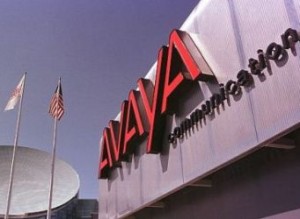 As Avaya continues its transition from a hardware company into a communications and collaboration software provider, it is going through some growing pains, including a shakeup of executives and uncertainty around a potential initial public offering that’s been rumored for months.
As Avaya continues its transition from a hardware company into a communications and collaboration software provider, it is going through some growing pains, including a shakeup of executives and uncertainty around a potential initial public offering that’s been rumored for months.
At an Avaya user conference in Boston yesterday, executives outlined the company’s roadmap for the future, which leans heavily on unified next-generation communications and business collaboration software. Avaya President and CEO Kevin Kennedy said Avaya will be “leading with applications” that allow for management of the full data centre stack.
“Data and infrastructure are crucial, but the speed and veracity in the industry is in the application layer. Organisations will be redesigned by pulling infrastructure under application, which gives the network the opportunity to not just be application aware, but application sure, meaning the application configures the network to guarantee the operation of those applications,” he said.
Moving from a telecommunications and network hardware company up the stack into the application layer seems like a natural fit for the company, said Zeus Kerravala, principal analyst at ZK Research.
“There’s a sea change in IT now. More cross-function decisions are being made. It’s not just one group within an enterprise making the decision, its being done at a higher level. That opens up new buyers and new opportunities,” Kerravala said.
CIOs are looking for overarching management tools that allow an entire communications platform to be centrally managed to avoid silos when managing the network, data centre and communications areas, he said. The challenge is that Avaya is in a crowded market space, with the likes of Cisco, Microsoft, HP, Dell and Juniper also looking to grab share.
To prepare for the transition, Avaya has gone through a variety of changes in the recent months. For example, there have been a series of personnel moves at high-level positions, such as Mohammed Ali, SVP and president of client services, and Alan Baratz, technology evangelist, recently leaving.
A handful of new senior executives, many of whom are from Cisco, have come on board, including corporate strategy and development executive Pierre-Paul Allard, Networking head Marc Randall (both of whom have worked at Cisco) and Mike Runda, now SVP of service delivery. The company is in the midst of determining its financial strategy as well, including when it will move forward with plans for an initial public offering.
Unified management software is an area where users will increasingly look to invest, predicts Rod Sagarsee, president of the International Avaya Users Group, which sponsored Monday’s conference. While most enterprises are still in the early stages of adopting such management software, he said he believes it will catch on as next-generation communications tools, such as data centre collaboration, videoconferencing and cloud computing, continue to gain traction.
“In the future it will be a matter of having full collaboration across the enterprise,” he said.
The company has various products in these areas and Kennedy promised additional rollouts in the coming months. On the collaboration side, for example, Avaya executives demonstrated a videoconferencing tool based on the company’s Aurora platform.
Its Flare user interface recently extended integration on to iPad tablet and the company has its LiveEngage, another conferencing tool. On the contact centre suite of products, Avaya has the Aura Experience Portal and Orchestration designer, which each aid call centre operations.
The company’s Identity Engines 8.0 was recently released as a mobile device management tool to tap into the bring-your-own-device (BYOD) craze in the market. Meanwhile, the company is not giving up on the hardware side, with the recent release of its VSP 7000 10.1 top of rack horizontal switching device and its ERS 3500 switch.
On the video conferencing side, Avaya hopes to close soon on its $230 million purchase of Radvision, which specialises in video collaboration.
While the company is making moves, analysts say Avaya is in a highly competitive market. Within enterprises there may even be departments using products or services from competing companies, such as Avaya, Cisco and Microsoft. The key, said Gartner analyst Steve Cramoysan, will be providing a truly unified environment that eases the management of the collaboration, telephony and contact centre divisions.
“They need to build some credibility with customers that they can deliver the full stack,” he said.
While Avaya has been a mainstream player in legacy telephony and contact centre operations, it’s in a crowded market when moving into the next generation communication management systems.





